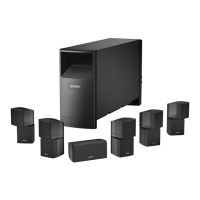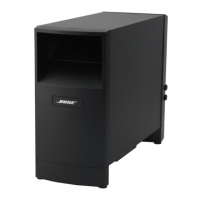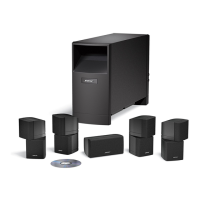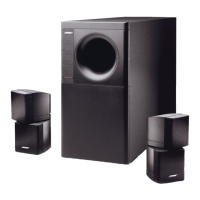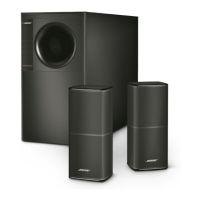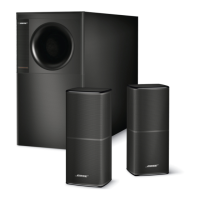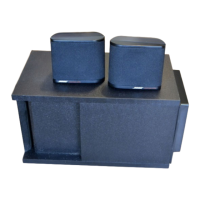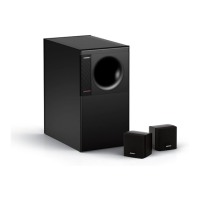Using
Your Acoustimass"
15
Speakers
For
realistic
home
theater
sound
LFE
level
control
The
LFE
level control on your Powered Acoustimass module increases or decreases the
relative level of low frequency effects on movie soundtracks. Use it to regulate the presence
of these underlying deep bass sounds.
You
may find it unnecessary
to
adjust this control. The
factory, or detent setting is appropriate for a majority of listening situations.
Sass
control
The Bass control on your Powered Acoustimass module can help you customize your
listening room. Turning the control
to
the right will add bass
to
the sound
in
rooms that might
be characterized
as
too shrill. Turning down the control will "brighten" the listening room. As
with the
LFE
level control, you may find the factory setting
to
be completely appropriate for
your listening room.
Setting
your
Dolby
Pro-Logic
receiver
For video applications, we recommend the surround-sound center mode setting
of
your
receiver
as
WIDE (Figure
8).
Instructions for this process vary, depending on the brand and
model of receiver you are using. Follow your receiver owner's guide for testing and adjusting
the balance of each speaker.
ON
(at maximum setting)
Setting at receiver
Large
Large
Large
ON
FigureS
A Dolby Pro-Logic receiver with
the center mode set
to
WIDE
10
Setting
your
Dolby
Digital
receiver
Your Acoustimass 15 speakers are fully compatible with the output from Dolby Digital receiv-
ers.
Integrated Signal Processing assures full bass reproduction for
all
channels regardless of
receiver settings. However, the table below suggests a set
of
recommended receiver settings.
The cube speakers are full-range, or LARGE speakers on the Digital screen menu.
Turn
the
subwoofer and the
LFE
(low frequency effects) ON. Set the crossover to the lowest number
possible, typically 80
Hz.
Speaker
Left and Right Front
Center
Left and Right Surround
Subwoofer
LFE
(low frequency effects)
Note:
The
Acoustimass 15 speaker system incorporates an automatic protection circuit,
which guards against most kinds
of
damage from electrical stress or overload.
This
circuit
activates
at
high volume levels
to
reduce output, causing a slight decrease
in
volume.
This
is
normal operation
and
indicates that power input may
be
exceeding safe levels. Sustained
listening at these levels
is
not recommended.
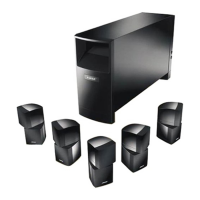
